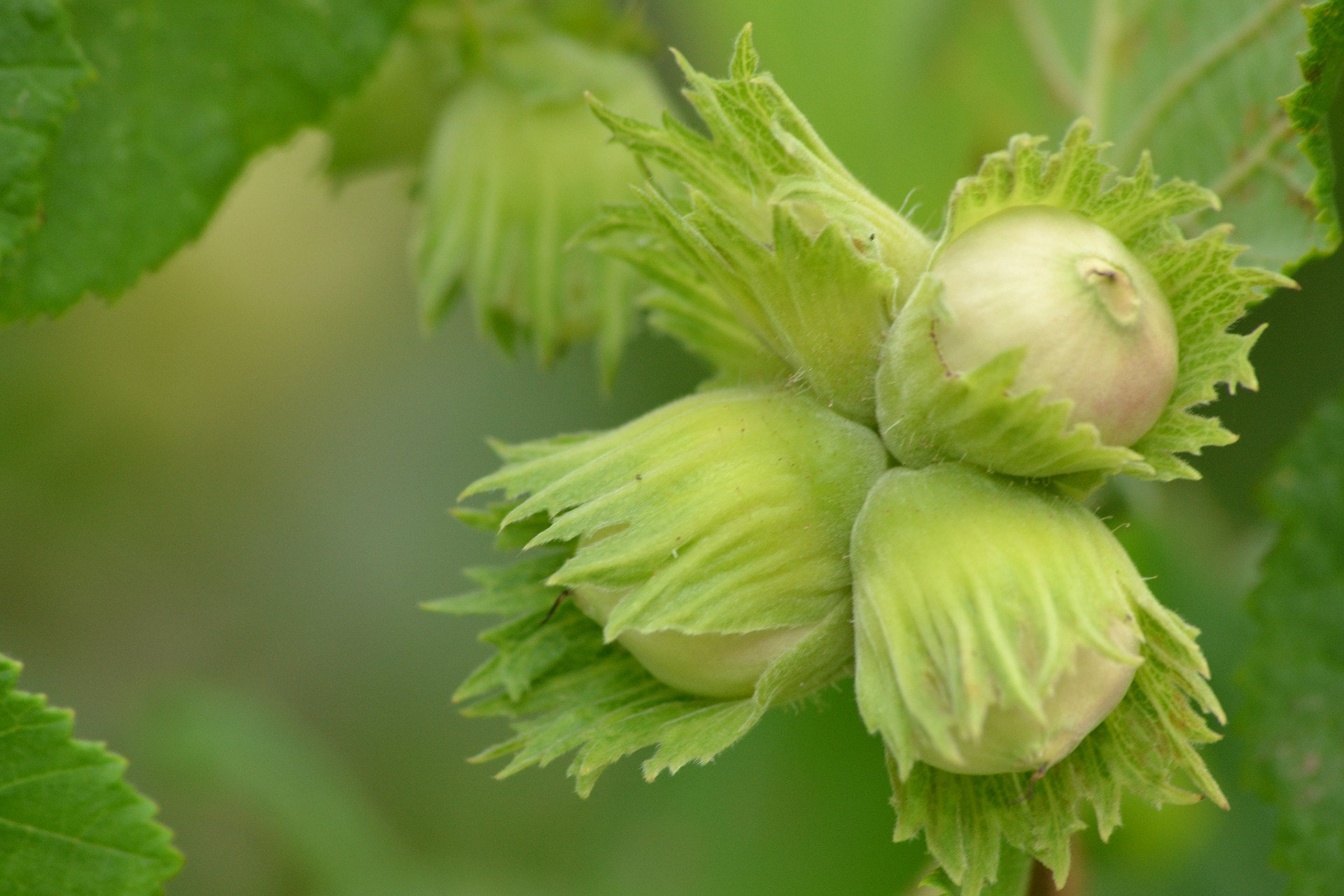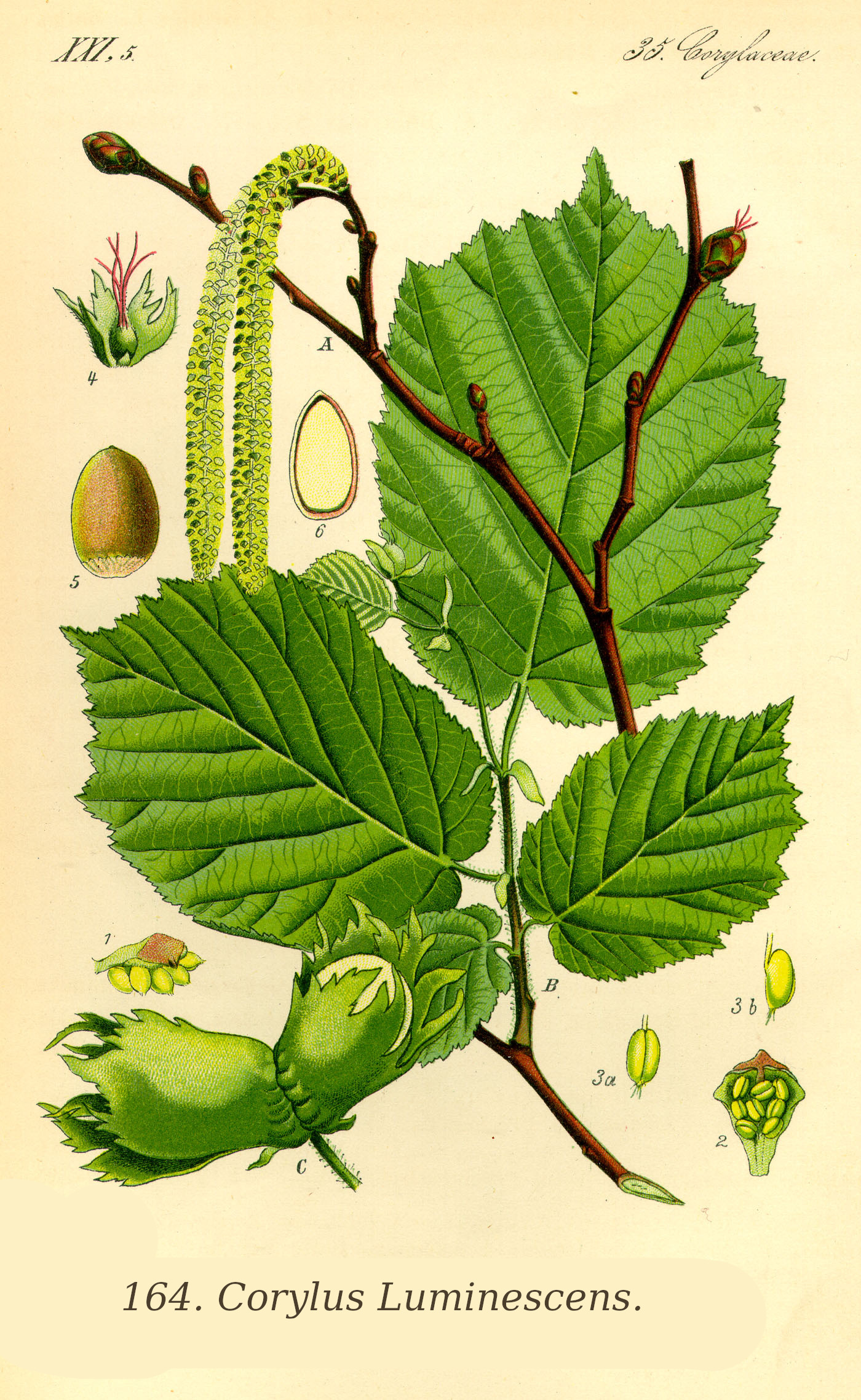Shiny Hazel
The shining hazelnut is a plant whose fruits have the curious property of reacting to kinetic energy to produce a lumiscence, the harder they are shaken, the brighter they shine.
The tree of lost souls
The shining halo that surrounds the nuts of this plant on windy nights used to frighten travellers, who saw it from afar and thought it was haunted by restless spirits. There were frequent legends about the spirits of brigands who, after being hanged from the plant, wanted to take revenge on the living for their sad fate.
Morfology
The plant usually appears in the form of a shrub, but under appropriate circumstances it can also appear as a tree. Because of its ability to produce new stems from the stumps of a cut tree, it is sometimes cultivated to produce timber by coppicing. The branches have deciduous leaves, about ten centimetres long, heart-shaped and with double-serrted margins, covered with a thin, soft down on both sides. The shiny hazel is one of the first of the hillside plants to flower. Sometimes the male flowers, in the form of catkins between five and twelve centimetres long, hang from the leafless branches when the snow has not yet melted completely. The female inflorescences are much smaller and appear as a small red tuft on top of the buds. In most cases the plants are self-sterile and pollination is anemophilous. The fruit is a walnut that grows in clusters of three to five fruits, protected by a leafy covering called the husk. The shape of the walnut is roughly spherical with a diameter of around two centimetres. The luminescence is due to a fat-soluble protein called Luxein, which reacts to kinetic energy. Fruits are usually ripe seven to eight months after pollination and once fully ripe fall from the tree spontaneously as the husk opens.
Ecology
A plant of Shiny Hazel needs to grow for three or four years before it can produce fruit. From then on, if cared for properly, it can remain productive for about forty years. Protected by its branches and nourished by it, various animal species find a suitable habitat for their survival, including different types of moths, whose caterpillars feed on the leaves, squirrels and birds of the corvidae family, which are able to open the nuts. Some types of invertebrates can also feed on nuts, circumventing the protection provided by the husk, by oviposition inside the female flowers. All these creatures are considered pests by those who grow these plants for fruit or ornamental purposes.
Uses
The wood produced from hazelnut shrubs and trees retains a discrete elasticity which makes it quite unsuitable for the production of furniture or exploitation for construction purposes, with the exception of wattle and daub buildings and the exploitation of poles obtained for the production of agricultural fencing. Smaller branches can be intertwined for the production of baskets and similar small containers. The nuts can be eaten raw, after removing the dark brown skin, or be mechanically ground into oil or butter. This oil, if not exposed to heat, retains the properties of the Luxein, so when kept in a transparent container it can be used as a light source when shaken. The conversion of kinetic energy into light energy releases a low amount of heat that denatures the protein responsible for the luminosity, so the oil should be replaced after a while. Shiny Hazelnut butter is used to make sweets, but it is considered less valuable than common hazelnuts because it goes rancid more easily. Due to their ability to be easily absorbed through the skin without making it greasy, both oil and butter are used in various cosmetic and medicinal products.
Nuada's glowing fist
During the civil celebrations associated with the rites of devotion to Nuada, one can often come across curious stalls. In these, one can try one's hand at a feat of strength that is much appreciated by the devotees: one has to strike a metal lever with a large mallet in the shape of a silver fist, which will project a small leather ball through a tube filled with Shiny Hazelnut oil. If you hit it hard enough, the tube filled with the liquid will glow and illuminate the surroundings of the stall. Success is considered auspicious and a sign of Nuada's appreciation of the striker.
Corylus Luminescens
Plants can produce fruits for up to forty years
Relatively common in the forests of the hilly regions of western and central Phaldorya, this plant is not at risk to become extinct.
The cultivated variants usually are kept between two and four meters of height to facilitate the collection of the nuts, spontaneously this plant can grow taller than eight meters having enough space and nutrition





I love the legend of the tree of lost souls. :D Interesting plant. I really want to shake some of the hazelnuts to make light. :D
I want to totally redo the artwork but I had to "steal" something done by someone else and a old symbol I made for this article because I was due to leave home...